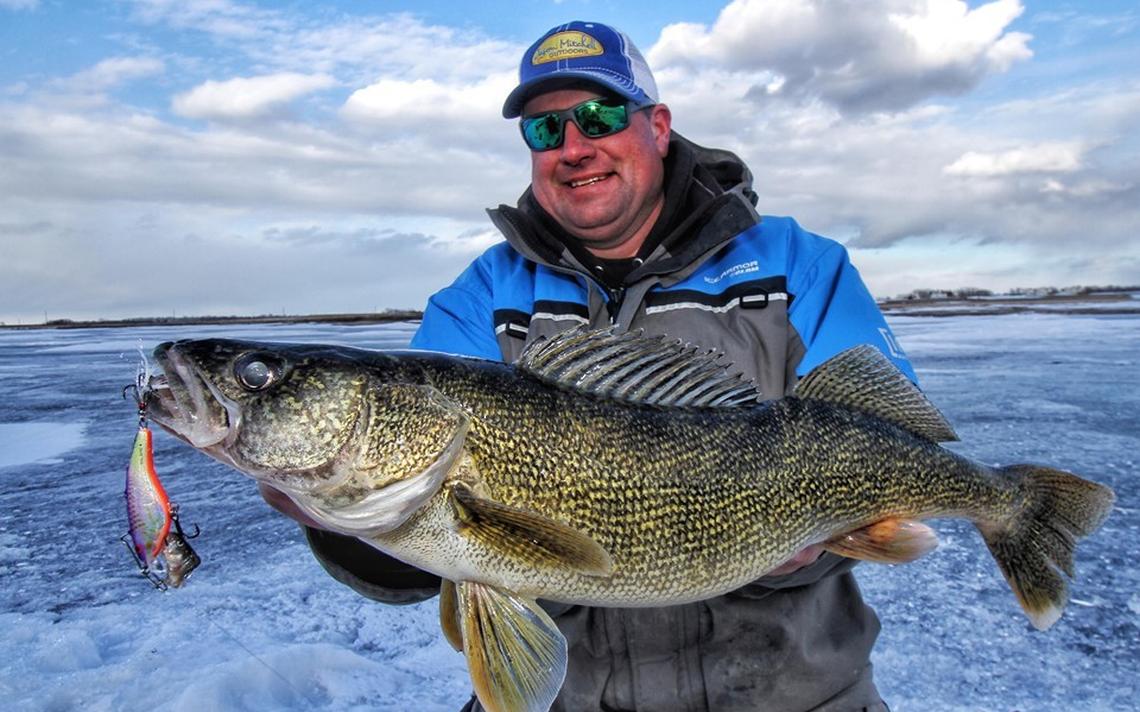How to use a fish finder for ice fishing: a complete guide for beginners and experts
Learn how to use a fish finder for ice fishing with pro Jason Mitchell's in-depth tips
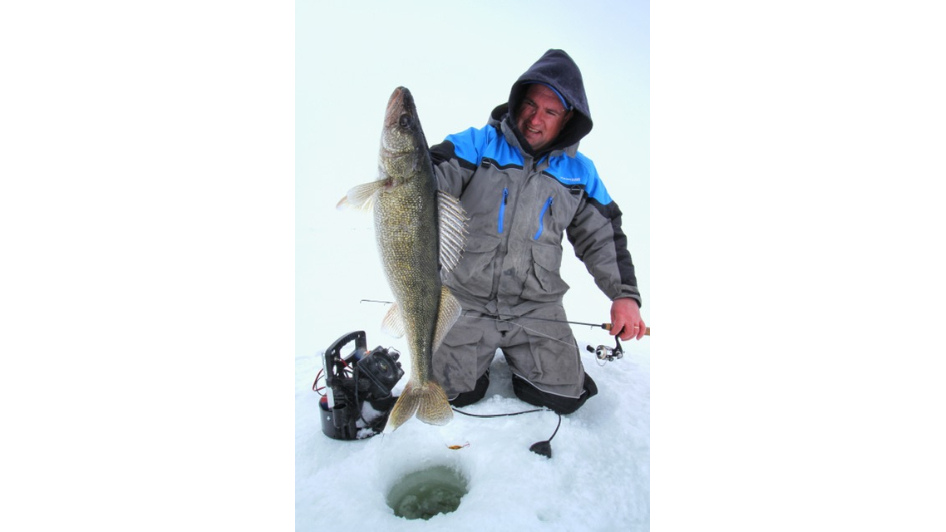
A major part of successful winter fishing is learning how to use a fish finder whilst ice fishing to find fish and features that you would otherwise not be aware of.
In fact, part of the driving force behind the recent uptick in popularity in ice fishing is the widespread availability and affordability of fish finding electronics – sonar is now being used by ice anglers to catch more fish like trout, panfish, walleye, bass, perch and northern pike and make life easier for the angler. Indeed, knowing how to use a fish finder for ice fishing is an essential part of your arsenal.
The sonar itself works by bouncing a signal off solid or semi-solid objects, which is then interpreted by the device and used to relay a depth on a screen, but the display can also reveal useful information like bottom composition, hazards, snags or weeds. It’s a real help when you can’t see the bottom and want to identify fish and fish-holding structure.
Of course, what changed everything was being able to watch your lure and watch fish respond in real time to its movements with a modern ice fishing fish finder. Besides sonar, GPS contour maps of lakes and rivers are another beneficial tool that have really helped ice anglers be more productive. So, here's how to use a fish finder for ice fishing – and how to choose the best one for your fishing.
- Reel ’em in with the best ice fishing rods you can buy
- How to go ice fishing: a beginner's guide
- Stay warm outdoors with the best down jackets and puffers
How to use a fish finder: Choosing the best type of fish and depth finder for ice fishing
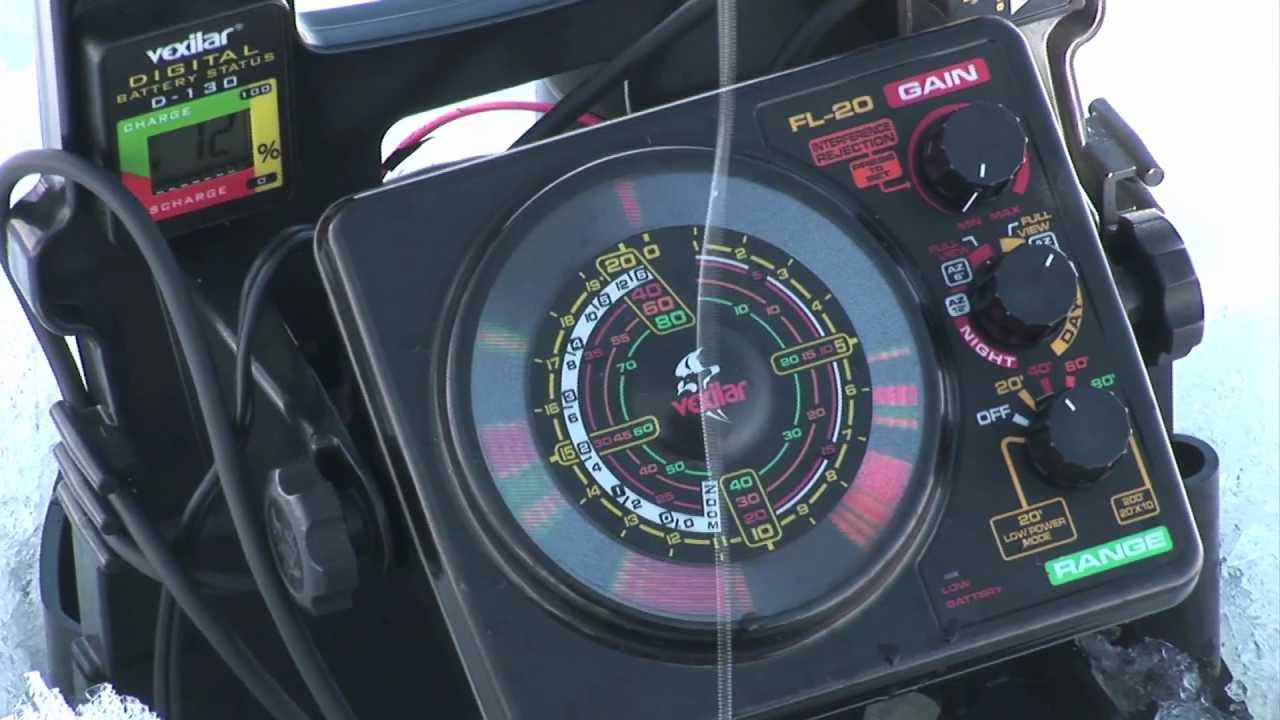
Ice fishing is a stationary form of angling where the transducer – the part of the fish finder that beams the signal down and catches it coming up – is hanging down in the hole. Because of this stationary controlled setting, flasher-style depth finders with an analog signal are extremely popular with ice anglers.
The analog style is great for revealing movement within the cone angle, which is the field of “vision” the finder has when looking down. Imagine an upside-down ice cream cone with the thin end starting at the transducer and the fat end on the bottom. With this kind of fish finder, experienced ice anglers can read the attitude of the fish to a particular presentation as it enters the “cone” of “vision” and moves around.
How to use a fish finder for ice fishing: the basics you need to know
To get started using electronics with ice fishing, make sure that you drill your holes straight up and down and keep your transducer right below the ice as vertical as possible. Slush right below the transducer or skimming the transducer will affect the unit’s ability to read. The first step is simply finding bottom by using your depth finder.
Advnture Newsletter
All the latest inspiration, tips and guides to help you plan your next Advnture!
After you find bottom, slowly drop your lure down the hole. You should be able to find your lure as you slowly lower the lure. You will notice that the lure typically gets easier to find as you drop the lure further down into the water column. The reason is because the depth-finder cone angle widens as the depth of the water increases.
Fish will typically create a stronger signal or return than what you see with your lure. As a rule of thumb, you want to turn your gain or sensitivity down as low as possible – in fact, lower the sensitivity so that you can barely see your lure. This will provide a cleaner picture. The big advantage to using a sonar while ice fishing is you can move until you find or see fish. You are not going to catch fish that are not below you when ice fishing.
How to use a fish finder for ice fishing: Why choosing the right fish finder really helps
Once you find fish, you can watch how the fish are responding to your presentation. Are the fish bold and rising several feet to approach your lure or jig? Are the fish timid and scared by movement and staying static or low in the water? You can fine-tune your presentation dramatically by altering your jig cadence or experiment with colors and baits to watch how fish react.
As a rule of thumb, keep your presentation above the fish. As fish swim into the cone angle and approach your presentation, slowly raise the presentation to force the fish into climbing the water column. If you plan on just fishing for panfish while ice fishing, the classic Vexilar FL-8 is a rugged bullet-proof analog flasher unit that excels as an entry level unit that works great for showing suspended panfish.
If you plan on walleye fishing, for example, where you will be typically finding fish much closer to the bottom, zoom features will be valuable for seeing the fish and your presentation better. If you are price conscious, look no further than the Vexilar FL-18 as a very budget friendly flasher that has a 6 ft / 1.8m zoom that is created by splitting the screen and blowing up the bottom on the left side of the dial.
When searching for suspended fish like crappie or trout, do not be afraid to rock the transducer around in the hole to increase what you see in the water column. If there are objects returning a signal in the water column that do not move, you are probably looking at either aquatic vegetation or a submerged tree… both are great locations to find fish.
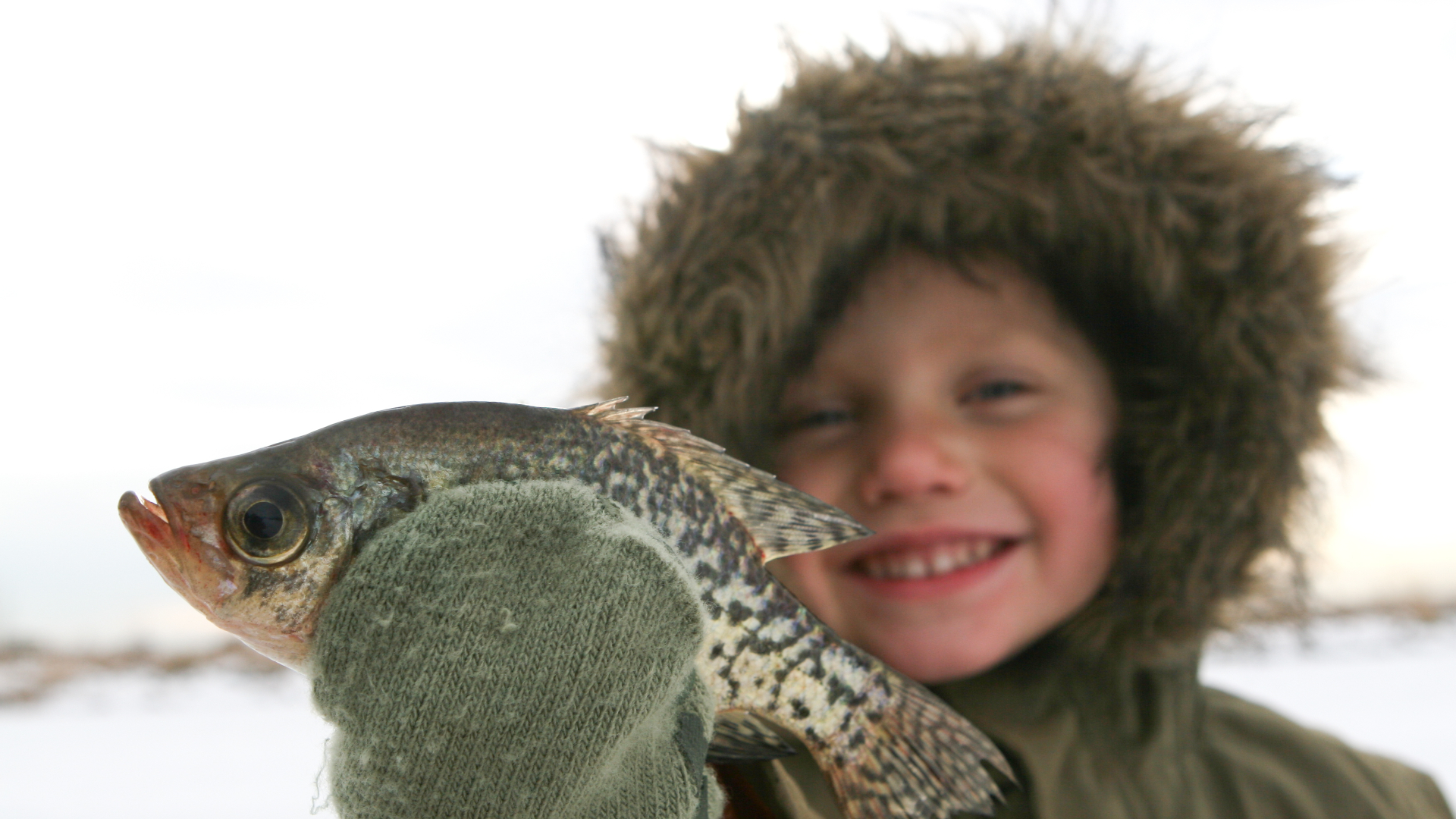
How to use a fish finder for ice fishing: How to find fish-holding areas and identify different bottom types
To find hard bottom areas with your depth finder, the simplest method is to turn out your range so that you can look for a second or third echo. For example, if you are in 10ft / 3m of water, turn out the range to 40ft / 12.1m. This will typically shrink the scale of your picture but what you are looking for is a false return signal twice the depth.
If you get a second softer return in 20ft / 6.1m and a faint return at 30ft / 9.1m over 10ft / 3m of water when you turn out the range, you are looking at a hard bottom. This hard bottom return is typically boulders or rock. If you only see a second return, the bottom is probably sand or gravel. If there is not a second or third return, you are looking at a very soft bottom like mud or silt.
Besides the obvious aspects of looking for fish and watching fish respond to your presentation, reading the bottom composition can greatly aid the ice angler. Walleye often like to relate to rock structure. Panfish can often be found over soft bottoms where there are insect larvae that burrow into the mud. The bottom composition is often part of the pattern and it’s up to you to work out what your target species prefers.
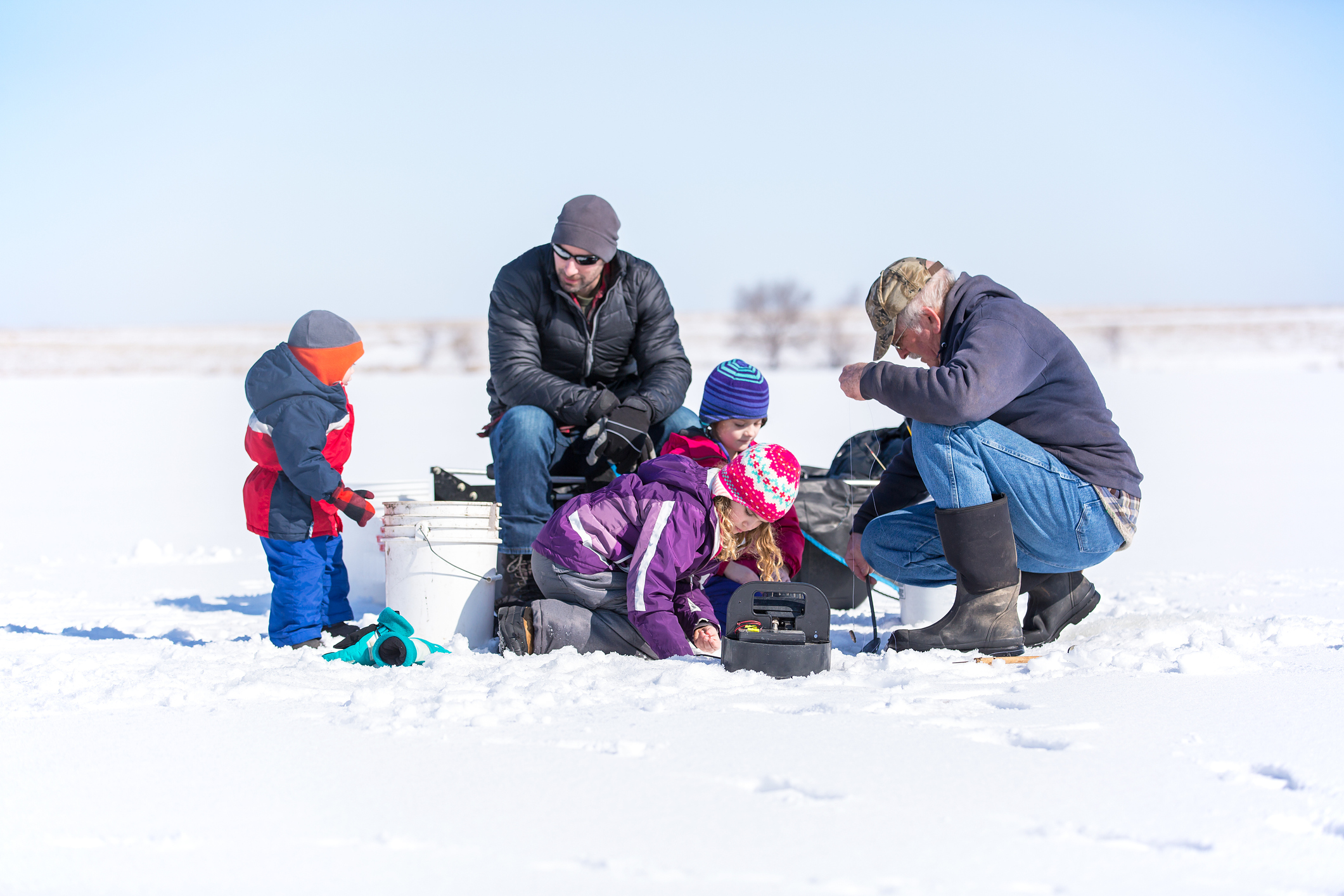
How to use a fish finder for ice fishing: Catching more fish with a fish finder
Just as sonar is crucial equipment on a boat, ice anglers have also adapted this same type of technology to catch a lot more fish through the ice. Some units like the Vexilar FLX Series are manufactured specifically for the demands of ice fishing.
Other anglers convert open water LCD units with ice bundles or kits that include battery packs. Traditional liquid crystal displays can be used for ice fishing but they do draw much more power and often do not display as real time. The advantage of some LCD units is that many also include GPS with mapping capabilities.
Regardless of unit, most ice anglers now agree that sonar will make you a much more effective ice angler. Once you get used to using sonar, it becomes difficult to ice fish without it. As you can see, learning how to use a fish finder for ice fishing is a skill that's well worth learning and hopefully this guide will set you on the right path to many successful sessions this winter.
Midwesterner Jason Mitchell is the star of his own outdoors TV show and a leading expert when it comes to many styles of freshwater and ice fishing. He’s helped millions of people catch species such as crappie, walleye, perch, bass, trout, panfish and catfish through his information-packed programmes and articles. Needless to say, Jason is also an expert on fishing tackle, angling accessories and electronics.
